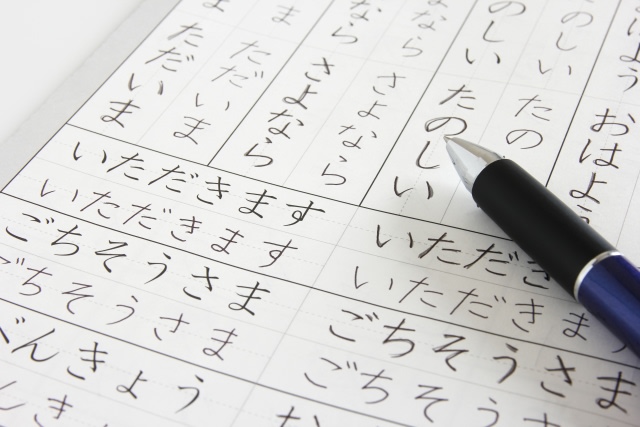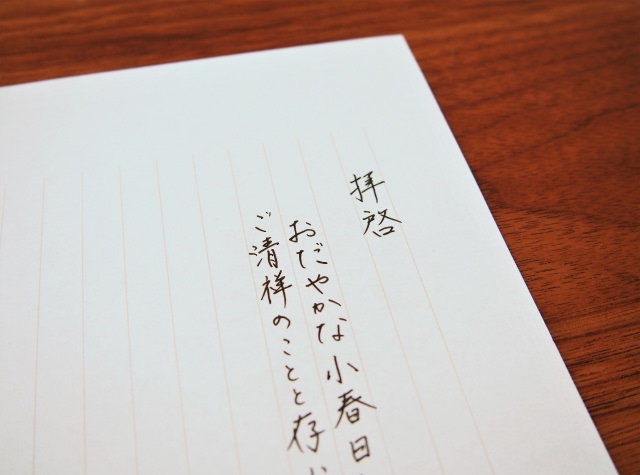Updated November 1, 2024
How to Learn Japanese: Tips, Tricks and Study Methods [2024 Guide]
One of the best ways to enhance your experience living in Japan and open up more possibilities for both personal and professional growth is learning Japanese. But how do you get started and keep studying?
In this article I will cover some tips for getting started learning Japanese as well as continuing your study. If you have a foundation in Japanese and are interested in the nuts and bolts of business Japanese, check out my article about that.
In this article: 📝
- 1. Tips when starting to learn Japanese
- 2. Ways to study Japanese: More traditional methods
- 3. Ways to study Japanese: Media
- 4. Ways to study Japanese: Experiences
- 5. Other ways to learn and study Japanese
- 6. How to learn industry specific business Japanese
- 7. So should you learn Japanese?
- More Japanese Learning Resources
I started with classes in university. I did a one-year study abroad with intensive language courses and then transferred to a university in the U.S. with a Japanese language major. After graduation, I decided to go to graduate school in Japan. The program was an English-Japanese hybrid, but all of the lectures and most materials were in Japanese.
My ultimate goal was to get a job here, so I fought with my own dismal writing skills to get a new-graduate job. That’s a whole story on its own. I was a full-time translator before moving into a fully Japanese-language position.
Keep in mind that I am not an engineer and my suggestions will lean heavily toward entertainment media! Still, I hope you will find something helpful here.
1. Tips when starting to learn Japanese
Getting started can be the most daunting part of learning Japanese. Japanese can be hard to learn for English speakers. So what should you do? These are my suggestions as you start looking at your options:
Figure out your learning style
First of all, it’s really important to nail down how you learn.
The four main learning styles are visual, auditory, reading/writing, and kinesthetic (VARK). It sounds fancy, but it boils down to how you absorb information best.
Visual learners don’t just do better looking at pictures or videos — they learn by mapping out concepts or relationships visually. They are the ones drawing pictures to explain something. (I am this PePe Sylvia meme.)
Auditory learners prefer listening to information, but they also think out loud to process and understand something. Talking things out or having a discussion is how they learn a subject best.
Reading/writing learners are the people who vacuum up information from books or other text media. They also process and digest educational materials by writing about them. They love a good writing assignment or written exam.
Kinesthetic learners need to move. They need to experience things. They need to practice things out in the world (or at least roleplay a situation in a classroom).
Keep in mind that no one is 100% one learning style. But you might have one that works better for some types of information than others.
For example, you might need to feel your hand as you write Japanese symbols over and over again… As well as read it on signs or in books. You could ace memorizing things by making mnemonics. Or maybe you just need to learn to read the Japanese names of Pokémon!
Sometimes it is just helpful to find out what definitely doesn’t work for you. I know I have to see information in written form. Telling me verbally will go in one ear and out the other.
There are many other types of learning styles. But for VARK, you can find quizzes online to give you a starting point. Here is the one from the method’s website. This one integrates your MBTI. Many more are just a Google search away.
If something isn’t clicking with your Japanese study, don’t get discouraged! Approach it differently. You might just be trying to learn it in a way that doesn’t meet your needs.

Learn hiragana and katakana first
Japanese has multiple alphabets: hiragana (ひらがな), katakana (カタカナ), Chinese characters called kanji (漢字), and the Roman alphabet. There are also two styles of spelling for the Roman alphabet, Hepburn and Kunrei.
I recommend learning hiragana first, but there is nothing wrong with starting with katakana. Hiragana are the backbone of Japanese. But Katakana tend to be simpler shapes, and are often used for words borrowed from other languages like English.
Learning the alphabets will give you an idea of what Japanese sounds like. Every word is made up of the sounds represented by hiragana and katakana, or in some cases combinations to get close to a sound from another language.
In one Japanese program I was in, the method didn’t push learning those alphabets. Even the advanced textbooks were in Roman letters. I found that my classmates could not read Japanese, and that held them back.
Learning how to read hiragana and katakana will help you read and process the sounds of Japanese in Japanese. You want to do that as soon as possible.
When you get the basics down, it can be helpful to study them in words rather than by syllable. This is especially true for katakana, as borrowed words can be long. I’ve found it easier to memorize a whole unit instead of always sounding it out.
English words especially can have unexpected spellings. It’s based on how the Japanese ear heard the word, not the English pronunciation. Borrowed words may sound like saying an English word “in a Japanese accent,” but I promise it isn’t that easy!
One thing I found helpful for both are these notebooks for elementary school kids. They even have short, simple reading pages about different topics. They can be found in most book and stationary stores, too. Make sure you pick up the ones that say こくご.
For the brand I linked, the lowest level is JL-8-4 with big boxes. There are a bunch of brands to choose from, as you can see among the product suggestions. When you start practicing kanji, there is a version for that too, かんじれんしゅう.

It really helped me to move my hand over and over to memorize because I am a kinetic learner. A workbook or app with audio might be more helpful for some to connect the sounds with the shape in your head. Digital or analog flashcards are also great.
Remember that the order in which you draw the lines is extremely important! More on that later.
• Work on polite sentence form first
In English, you speak more politely at work or to service workers (hopefully) than you do to your friends and family. Japanese is similar, but instead of just word-choice or the occasional rephrasing, verbs are conjugated differently. Polite form is called desu-masu form.
Basically, you want to stick to arigatougozaimasu rather than just arigatou. Gomennasai instead of just gomen when apologizing. Mattekudasai (待ってください) instead of matte when you tell someone to wait for you.
You also want to add desu (です) at the end of statements. Instead of just daijoubu for OK, say daijoubu desu. Not “Sugoi!” and “Omoshiroi!” but “Sugoi desu ne!” and “Omoshiro desu ne!” Instead of just naruhodo, which you shouldn’t say to your boss, manager, or senior colleague anyway, use polite alternatives.
As a learner, you want to stick to being as polite as possible. Especially if your end goal is to use Japanese in professional settings.

Get comfortable with common phrases
Everything starts with hello - or konnichiwa, in this case. Learning set greetings and common conversational phrases can go a long way.
When you get more of a handle on the language, it can also make you look more fluent when you can use context-dependent phrases correctly.
Here are a few more detailed articles on Japan Dev about specific phrases:
1) Otsukaresama desu (お疲れ様です)
2) Yoroshiku onegashimasu (よろしくお願いします)
3) arigatou gozaimasu (ありがとうございます) and other ways to say “thank you”
4) ogenki desu ka (お元気ですか)
5) The art of apologizing in Japanese
6) Saying no without saying “no”
7) Filler words and aizuchi (相槌)
Learn about the culture with the language
Language and culture aren’t concepts that can be separated. Japanese culture defines the language and vice-versa. You can’t learn a language in a vacuum if you want to be able to communicate.
You don’t have to like or even try everything. But learning about concepts like honne (本音) and tatemae (建前), social hierarchy, gestures and other non-verbal communication, and how people interact in the workplace will help you make sense of it all.
• Input, input, input!
To learn a language you need a lot of input: Listening and reading. It’s only when you have enough input that you can start output: Speaking and writing.
Maybe you find listening easier. Maybe reading. You ideally need both, but first find what works best for you to build a foundation. Think of your learning style!
Don’t be too hard on yourself if you can’t seem to get a hang of speaking, let alone the daunting task of writing. You just haven’t gotten the needed amount of input yet.
(Someday I will get enough input to write better…)
2. Ways to study Japanese: More traditional methods
So you have gotten the basics and you want to expand your knowledge and keep practicing. You have already explored textbook learning and are looking for something more to meet that need for input.
Here are some suggestions that you can try both in Japan and in your own country to take you to the next level.

2.1 Study for a Japanese proficiency exam
When applying for jobs, most companies will use standardized testing methods to gauge your Japanese skill level. Here’s how you can figure out if you meet the language requirements.
A lot of materials for learning Japanese are based on proficiency tests, most commonly the Japanese Language Proficiency Test (JLPT).
The JLPT has five levels: the easiest, N5, to the hardest, N1. The test is divided into language knowledge (vocabulary, grammar, and kanji), reading, and listening sections. It is scored out of 180 points and held twice a year in Japan and once a year in other countries.
Many jobs looking for Japanese language skills require N2. It all depends, of course, but you don’t necessarily need to pass to get a job.
The reasoning behind working through the material for these tests is simple: It is a tried and trusted method to assess language ability. The Japan Foundation and Japan Educational Exchanges and Services have been offering the test since 1984!
If you are just starting your journey, start off gently with N5. The material builds on itself and it might be too overwhelming if you suddenly try for N3! You don’t have to hurry, take small bites.
Here are some tips for studying for the JLPT.
The first time I took the JLPT, I absolutely crashed and burned. Don’t let a failed JLPT make you hate Japanese! (Me for a few months after.)
I also recommend the Japanese Proficiency Test (JPT). It is based on the TOEIC (Test of English for International Communication). It is scored out of 990 points, tests the same subjects as the JLPT, has more practical Japanese, and is held every month so you can closely track your progress.
Unfortunately, they raised the price to 7,700 yen in October 2023, so maybe you can’t take it that often. (The JLPT is 7,500.)
When you get to a higher skill level or want to test your business Japanese and cultural knowledge, then try the Business Japanese Proficiency Test (BJT).
It tests your ability to gather, summarize, infer, predict, memorize, and filter important information. Based on your performance, it predicts your social, cultural, and professional knowledge. It is scored on six levels from J5 to J1+.
Keep in mind that these tests focus on listening, reading, and knowledge like vocabulary, kanji and grammar. They do not test your speaking or writing abilities! Scoring high on a test doesn’t always translate to being fluent.
Using standardized tests to study isn’t for everyone. Timed exams can be nerve wracking and debilitating for some. Don’t focus too much on the test aspect. The important thing is learning the material!

2.2 Enroll in a language school
If you are looking to study in a classroom but going to university isn’t an option, there are also language schools catered specifically to learners of Japanese as a second language. Some are even specialized for adults learning business Japanese after work.
So should you go to a Japanese language school?
Some of us need structured classes, a textbook, and homework, or we can’t find the motivation. Language schools are helpful if you feel overwhelmed by self-study and would like a teacher who is ready to answer your questions.
However, you have to have the time to commit to going to class and doing the work. If you are juggling a demanding job or home life, or need to take things at your own pace, it might not be best for you.
So what are your options? You can check out this comprehensive guide to the top language schools in Japan.
If you aren’t in Japan and aren’t making the jump soon, fear not! It is the era of Zoom and Google Meet. There are many schools that offer online courses too.
2.3 Take a community Japanese language class
I have friends who have been living in Japan for years who want to learn the language, but taking classes at a language school just doesn’t fit in their budget.
If you are living in Japan, your local city government, volunteer group, or community center might be offering Japanese language classes for foreigners. Here is an example of one for residents of Minato Ward in Tokyo.
This article has a great list of community classrooms for each city ward of Tokyo. You can also take a look at this Tokyo Nihongo Volunteer Network guide. Options in other areas are just a quick search away!
Teachers are often volunteers, so the quality may not be as high as a language school offering a certification or classes geared toward the JLPT. But it is an affordable option for learning how to communicate in everyday life.
2.4 Use online course materials or an app
Are you a master of self-study? Is it easiest for you to make time for study when materials are available on your phone or computer?
There are many great tools for learning Japanese. Below are a few examples, but materials are in no short supply.
IRODORI Japanese Online Course
This is an online resource based on the textbook IRODORI: Japanese for Life in Japan. They also have an app! The material was put together by the Japan Foundation, one organization behind the JLPT.
The material is based on handling situations, which they refer to as “can-do goals.” It builds on the situation with words you need, goes on to reading, and you can even practice speaking out loud. The best part is that it is all free.
Wani-Kani
Recently my coworker was determined to restart his Japanese studies. He was excited to show me the kanji-learning website Wani-Kani. I was curious so I tried it out myself (because I love kanji).
I immediately loved the mnemonics. Starting from learning the parts that make up kanji, called radicals, is also a great method. There are actually official names for radicals, and Wani-Kani warns that their names are often more silly to stick in your head.
I like the way the curriculum is set up like leveling up in a game, and the spaced repetition system for their flashcards adjusts to your learning pace.
There are a few cons: You need to already know how to read hiragana and katakana (see I told you!), it’s a paid service after the first four lessons, and it doesn’t have a smartphone app (but there are APIs and third-party apps).
Still, you will need a good kanji dictionary. My favorite tool of all time is jisho.org. They also offer an app called imiwa. It is on the first page of my home screen and always on my bookmark bar! You can look up kanji by radicals, which is exactly what Wani-Kani teaches you.
This beautifully designed website is divided into 12 topics on Japanese culture, from martial arts and temples to sweets and the outdoors.
Each topic leads to a page with a video where you can toggle subtitles on and off and a list of articles to read more about the topic. There are even questions at the end and you can try your hand at writing a response on the comment board.
One thing that immediately struck me was being able to switch ruby, little hiragana written above kanji to show their reading, on and off at the top of the page. If you want to do this with any website, I recommend a browser extension like Rikaikun for Chrome.
Here is a list of more online tools for learning Japanese. There is also a section about apps.
3. Ways to study Japanese: Media
If textbooks and drilling information in lessons isn’t for you, here are some ways to study Japanese by engaging with entertainment media.

3.1 Read manga, magazines, newspapers, novels
Written media will help you learn kanji and grammar, and eventually help you write better too.
A popular way to study Japanese is to watch anime (アニメ) or read manga (漫画). The reason I particularly love manga, Japanese comics, is that it has a lot of conversational dialogue and not long paragraphs of description. Usually. It’s also one of the reasons I got into Japanese culture.
There are so many genres to choose from: The formulaic but classic action and adventure shonen (少年) genre, the female centered shoujo (少女) genre (which are usually romances but can span a wide variety of topics), isekai (異世界) and reincarnation (tensei; 転生) stories (which are all the rage right now), historical dramas, horror, and BL (“boy’s love”).
Shonen can be fun and action packed, but you need to be careful about story-specific lingo. My favorite celebrity learned Japanese by reading Naruto and ONE PIECE. He ended up having to be told he couldn’t talk like Naruto or Luffy.
Getting tankobon (単行本) volumes for series in Weekly Shonen Jump, Weekly Shonen Magazine, or Corocoro Comic, are good places to start. There are also monthly magazines from the same publishers, like Monthly Shonen Sunday.
Shoujo titles are usually high or middle school romances, and may have magical elements like Sailor Moon. The conversations can be more realistic, but romance might not be your thing. The biggest shojo weekly magazines are Ciao, Ribon, and Hana to Yume.
If you don’t want to drown in stacks of manga volumes, you can fill a digital shelf instead with sites like Shonen Jump Plus, Renta, Kodansha Comics Plus, Cmoa, LINE Manga, etc. There are also a wider variety of genres and titles than one specific print magazine.
Of course, if you are into other topics, like sports, fashion, cooking, cars, art, traveling or other hobbies, you can buy regular magazines. There are so many different hobby magazines in Japan and they are all easily accessible at your nearest bookstore or convenience store. (Websites like Cmoa also have magazine sections.)
If you are looking for something more challenging, there are newspapers, non-fiction books, and novels. I read a lot of newspapers for professional reasons, and sometimes read non-fiction about current events. If you want an easy way to get started, you can try NHK News Web Easy.
I could never get into novels because you need such a high reading level, but I read a lot of bilingual readers for famous Japanese literature in university. You can compare the Japanese to the English page and not pull out your dictionary every minute.
3.2 Watch movies, TV shows, plays, anime
While written media drills your reading skills, visual media takes your listening (and speaking) ability out for a drive.
I mentioned before that you should learn Japanese with culture. My personal favorite way to do that is watching movies. Maybe it's because my first exposure to the Japanese language was Godzilla…
Movies not only provide examples of communication between characters and navigating different situations (some unrealistic, I know), but also help you understand how Japanese stories are structured.

I recommend slice of life movies or TV shows (especially reality shows) to get started. Movies can be live action or anime, but I recommend live action because lip reading actually helps listening comprehension. Watching 2D fantasy or sci-fi anime movies puts my brain over capacity, and the Japanese isn’t practical.
If you are watching movies, series, or anime on a subscription service like Netflix, I recommend turning on subtitles. No, not English subtitles. Japanese ones.
I absorb information better by reading than by listening, so it helps me pick up a word I am not familiar with if I see it in the closed captions. It also makes it way easier to look up in the dictionary because all you have to do is hit pause.
Of course, when you are just starting out, please use English subtitles! But if you aren’t careful, you might end up just reading them instead of listening to the Japanese.
Many blockbusters are adaptations of novels, manga, or TV series. The novel or series can be your textbook and the movie the final exam! One of my friends got through his first Japanese movie in a theater because it was an adaptation of a manga we read in middle school.
If dramas aren’t your thing, there are plenty of variety shows (talk shows), news programs, stand up, cooking shows, you name it. Watching TV will keep you on top of trends and even provide hints for what to talk to your Japanese coworkers about.
The “big 4” of movie distributors are Toho, Toei, Shochiku, and Kadokawa. Big cinema complex chains, shinecon (シネコン), include theaters Toho Cinemas, Aeon Cinema, Shochiku Multiplex Theaters, United Cinemas, and many others. But you can also find your local “mini theater” for more independent and niche films.
Going to the movies can be expensive, as the standard price is currently set at 2,000 yen. However, most theaters offer membership programs for discounts and special deals. Movie tickets are also discounted on the first of every month “movie day” and Mondays or Wednesdays at most theaters.
Japan’s biggest TV station network is public broadcaster NHK. Other major broadcasters include TBS, Nippon TV, Fuji TV, TV Asahi, etc. Big streaming services include U-Next, Abema, FOD, and TVer, among many others. Also check out Nico Nico for YouTube-like content.
If you want to up the stakes even more, you can try live entertainment. While Japanese traditional theater will give you even more insight into the culture, Kabuki (歌舞伎), Noh (能), Kyogen (狂言), and other performance arts are not a good tool for learning practical Japanese.
But modern plays and comedy acts can be. Just on hard mode. This has been my newest endeavor and to mixed results. But if you go to local productions, you can meet people and maybe even get involved. Sometimes it isn’t the content you make, but the people you meet!
3.3 Translate your favorite media
It isn’t enough to read or watch for some learning styles — you need a more hands-on approach. For that, you can work on translating your favorite media from Japanese to English. (Or the other way if you are feeling brave.)
This goes for all sorts of written media, but also for things like games. In fact, I have heard a few stories of people starting their Japanese language journey because a certain manga or video game wasn’t localized into English.
Again, depending on the subject, it might not be the most practical vocabulary. But translating does make you take a hard look at sentence structure and grammar. It gives you an idea about how concepts are conveyed.
Just remember that all languages have idioms, and they aren’t necessarily the same! For example, while we say “talking to a wall” for someone who won’t listen no matter what we say, in Japanese you say “reading Buddhist scripture in a horse’s ear” (馬の耳に念仏).
I had a coworker say he was trying not “to step on a landmine” (地雷を踏む) and I thought it meant being careful like “walking on eggshells.” But it actually means more like “opening a can of worms.” Whew!
It was an employment choice rather than a language learning one, but my Japanese ability skyrocketed in the two years I was a full-time translator.
However, since it was all written, I can read more kanji than I know how to pronounce. This made everyone at my old job plead for me to never try reading anything out loud to them... Keep a good balance!
4. Ways to study Japanese: Experiences
Languages are for communication. To really learn Japanese, you have to go out and use it! Here are some suggestions for getting yourself out there.
4.1 Pick up a sport or hobby
One of the best ways to practice your Japanese is picking up a group-centered hobby. There are also unique hobbies that you can try while living in Japan which might not be offered elsewhere.
The hobby itself doesn’t have to involve a lot of talking. If you join a sports team, for example, you will mainly be training or playing. If it is a sport you already know, then you have a good foundation for learning the Japanese terms for the game to start.
I worked as a staff member for a few baseball and tennis tournaments at my last job, and learned a lot about them in Japanese. Maybe more than I know in English!
The real practice comes from communicating with your teammates and coach. Don’t limit yourself to just going home after you are done playing — go with your team for dinner or a nomikai too.
Team sports can also be a great place to learn about Japanese culture. Club social hierarchies are usually based on senpai-kohai relationships, and you will learn the nuances of how to communicate with people above and below you on the Japanese social ladder.
My personal suggestion, however, is something uniquely Japanese, like martial arts, flower arranging, tea ceremony, or calligraphy. A friend of mine got to a very high level of Japanese thanks to many years of diligent study of the tea ceremony!
Not only will you be learning something presumably new to you and the vocabulary attached, but you will also be learning an activity steeped in (pun intended) Japanese culture and philosophy.
If you are lucky, you will find a good teacher sensei (先生) that will teach you both about the art and provide advice about your life in Japan too.

4.2 Learn Japanese calligraphy
If you are serious about learning more about kanji, try learning calligraphy.
The order in which you draw the lines in a kanji character (stroke order) is absolutely everything! If you don’t learn properly, not only will your handwriting not look right, but you won’t be able to use stroke order or number to look up words in the dictionary.
Yes, I know you can probably use Google for that now too, but something you can’t Google is cursive. Yes, there is cursive for kanji. But to be able to read it, you have to have an understanding of both stroke order and omission/simplification of strokes with a brush.

I’m absolutely terrible at it, but I did study calligraphy for over six years. I already knew Japanese when I started, but making artful masterpieces while writing words over and over again to memorize meaning and stroke order would have been more fun than pencil in boxes.
If brushes and ink aren’t your thing, there is penmanship calligraphy as well. This covers hiragana, katakana, and kanji in one swoop, and is extremely practical.
Learning calligraphy also significantly boosted my ability to read other people’s handwriting. I worked in traditional media, so while reading handwritten notes from your boss may be outdated, it was a necessity for me.
Japanese people write things by hand less and less. I find myself forgetting the exact strokes and shapes of certain kanji because I just type the reading into my phone or computer. So calligraphy can be a great way to make a more interesting connection with written Japanese.
If you prefer learning alone, there are also correspondence lessons (通信講座). My classmates received a magazine each month that listed an assignment depending on level. They mailed their finished piece back for grading.
This might be a great option if there aren’t any schools or classes near you that fit your schedule!
4.3 Belt it out at karaoke
During a brief period when I was a private English tutor, I had a student who just wanted to go through song lyrics together. He liked music, singing, and songwriting, so this was how he kept interested in studying English.
One of the first types of Japanese media that I got hooked on was J-Pop. I still listen to more Japanese-language music than English. It definitely singled me out as a weird kid in high school, but a lot of my early Japanese vocabulary came from songs.
Song lyrics are not a good example for everyday sentence structure. Some of the word choice is too dramatic. However, singing can help your mouth adjust to the sounds of Japanese and increase listening comprehension.
When you are just starting out, even listening to see where words begin and end is important!
Japan also has the most widely available places to practice singing Japanese songs: Karaoke!! Want to practice Japanese pronunciation and reading in a fun way? Queue up a song and try reading the lyrics as they come up on screen!
It’s not weird or taboo to go to a karaoke box by yourself. Called hitokara, short for hitori karaoke (ひとりカラオケ), it can be a great low-stress way to both polish your Japanese and prepare your repertoire for a nomikai nijikai.
Just remember to watch out for two things: poetic double meanings for kanji and inflated weekend rates!
To create a double meaning, some lyricists use kanji to write one word but pronounce it like another. This is a dramatic example, but one song I liked in middle school had 痕跡 (konseki) “vestige” pronounced きずあと (kizuato), which means “scar” (傷跡).
Karaoke boxes are more expensive in the evenings and on weekends! Find a chain that works for you and make sure you sign up for a member’s card to be eligible for discounts.
5. Other ways to learn and study Japanese

Playing video games, card games, board games
This is in the same categories as both written and visual media and experiences.
Online games especially make for great ways to not only learn how to navigate story and gameplay and pick up cut scene conversations, but also to communicate with other players.
It can definitely be a good way to learn slang. Just don’t transfer it to the workplace!
Board games require other people to play with you! You could try to learn a new game alongside other learners. Or you could try to find a board game group or cafe in your area and meet new people.
If you are into card games, there are hobby shops that also host tournaments, like Hareruya. Once you have learned the names of Pokémon in Japanese, you can put it into practice!
Writing a journal, blog, or on social media
One assignment you will find yourself doing at some point if you take language classes is writing a diary. Explaining the activities you do each day is a great way to build up practical vocabulary. You also can practice writing about experiences and your impressions of events.
I recommend writing by hand when you are still getting a handle on hiragana, katakana, and kanji. You don’t want to sabotage yourself with computer and smartphone input until later…
If you get to writing longer and more complicated stories, then you could make a blog. You can also write on your social media. (But that all depends on if you are self-conscious about someone else seeing it!)
This is also the age of vlogs, TikToks, and reels, so you can practice your speaking too. Social media is the best way to meet and interact with native speakers. Just be careful about slang – it doesn’t translate exactly.
My favorite Japanese-learning Instagram accounts to watch lately are Taka Nihongo Dojo, themetroclassic, and Japanese with Gohan-kun, but there are many creators out there making great content!

Finding a conversation partner or pen pal
This can be a little challenging if you aren’t in a school setting. But you may meet someone through networking or a hobby who would like to just hang out and talk. Even better!
You may also have coworkers who want to practice their English with you. Don’t let it be a one-way street. Use the opportunity to set up a win-win agreement where you can take turns practicing speaking in each other’s languages.
I might be seriously dating myself with the pen pal suggestion, but I did a homestay once and ended up writing letters back and forth with my host mother for a while because she didn’t have social media.
Again, like the journaling and calligraphy, it forces you to write Japanese and write it well enough for someone else to read it. It’s also practice getting information across and explaining feelings or experiences.

Becoming a regular at a restaurant or bar
This was one suggestion I listed in my article about moving from the U.S. to Japan. Especially if it is a neighborhood place, you can meet people from your area and learn about local events.
Sometimes I have trouble going into a restaurant by myself, and bars are even harder. You could start by going out with a coworker to somewhere they suggest. If you like it, you can make it your own.
Attending or volunteering for local events and festivals
If drinking isn’t really your thing, then there are other ways to get involved in your area. Check out event fliers at your local library or community center. Go to festivals. If you can, volunteer and join the event staff.
You really never know who you might meet – or who the people around you will want to introduce you to. But leave yourself open to the possibilities. You will definitely learn a lot!
6. How to learn industry specific business Japanese
After diligent study, you’ve built your foundation and feel like you can operate like a functioning member of society in daily life. But professional settings can be a completely different story. How can you learn and improve your business Japanese?
6.1 Industry publications, podcasts, webinars, employee training
First, you need the words to talk about your field. it might be hard to know where to start. But you can expose yourself to all the same reading and listening materials as the entertainment ones I listed earlier — but specifically in your field.
At my last job, there was a weekly “magazine” that was just a few printed pages of text-only articles. The articles were about the latest events and number trends. It was incredibly hard to get through it at first, but my manager would dump a bunch on my desk and make sure I went through them.
Sometimes they would pile up and I would spend a whole day getting through the backup. But I learned a lot of the words I needed to talk about the industry as well as pick up on the hot topics and trends.
You can also utilize podcasts or YouTube videos if you prefer to listen to information. The slides provided for webinars also make great study material.
If you work for a large corporation, chances are they might also have special training curriculum and e-learning courses. The group holdings umbrella my current company is under offers a variety of online courses over several platforms.
Even if it isn't technical, a course on leadership or communication can still be beneficial if you take it in Japanese. If you see a course that interests you, don’t be afraid to approach your manager!
Some companies listed on Japan Dev also offer various levels of language learning support.

6.2 Networking events, seminars, workshops
Like I said in the experiences section, you have put yourself out there to polish your skills. Take it to the next level and try going to Japanese-language in-person networking events, meetups, and workshops.
You would be surprised to see how many in-person and online seminars are listed on Facebook. You can also browse the popular event app Peatix.
Japan Dev also has a guide for the best tech meetups in Tokyo, in Kansai (Osaka and Kyoto) and in Fukuoka. Even if the main language is English, you could end up speaking Japanese with someone you connected with there.
Not only will going to a seminar or workshop give you new vocabulary and hopefully some new knowledge about your field, but it will also give you a chance to mingle and discuss topics with other participants.
Remember to sign up for the after party or konshinkai (懇親会) for a chance to talk to speakers and other participants in a little more relaxed settings over drinks and snacks.
6.3 Learning on the job
My friends who have brought their Japanese up to professional levels have one thing in common: Learning by fire on the job.
While it’s better to not learn everything on the fly and have some formal study of Japanese for things like grammar, practice makes perfect. Or at least passing.
If you have the foundation and just have to make it work, then the office is the best classroom and your coworkers are your best conversation partners.
It helps to have a real-world goal. While there are group assignments and tests in a classroom setting, students are there for different reasons. In the office, you have a project, a problem, research, a deadline that requires communication and teamwork to solve.
The stakes are higher and money is often at stake, so remember to not just fly through and smile and nod. If you have a question — ask. Clear up questions or misunderstandings as soon as possible.
Don’t know what a word means? Look it up or ask. Don’t know how to word something? Look up a template and have a coworker look over it for you.
You will not always be in an environment where you have time for learning on the job. Sometimes you have to white knuckle it. But when you come out the other side, you will find that you learned a lot.
6.4 Making mistakes
As with learning any new thing, you will make mistakes. It’s just a matter of when — and how you deal with it.
While I had a basic background in vocabulary and grammar for business Japanese and knew some etiquette, the majority of my study was on the job.

Early on at my first Japanese-language-only position, I asked my manager for an eraser. (He made me fill out forms by hand.) He opened his desk and was about to hand me a small one, but he stopped and opted for a large one.
“You’re going to make a lot of mistakes as a newbie,” he said. “Better take this one.” Oh boy did I make mistakes. The eraser couldn’t save me from most of them.
I check the kanji for the name of the person I am emailing about a million times, read over any email at least three to four times, and triple check before I seal an envelope now. Better safe than sorry!
But my boss also said something that will stick with me forever: You learn more from your mistakes than your successes. Failure makes you examine events and review things more carefully so you get it right next time.
You will make a lot of mistakes. A lot. This was especially hard for me to accept as a perfectionist. But don’t let that discourage you or make you want to quit. You will learn more when everything doesn’t go exactly according to plan.
(Just make sure to practice your apologies…)
7. So should you learn Japanese?
Not all jobs in Japan require you to speak Japanese. Many tech companies are hiring engineers with no Japanese skills, and they offer language assistance and other support for foreign employees.
However, learning Japanese can help you make the most of your time in Japan. It can enrich your experience living and working here, and help you meet new people and grow professionally.
Japanese can be a hard language to learn. But the key is to find a way to study and practice that not only matches your learning style, but is also enjoyable.
Learning a language is a long journey, and it shouldn’t be like pulling teeth. If one study method isn’t working for you, try another. Go to a movie, pick up a book, open Twitter, head to your local community center… the possibilities are endless! So don’t limit yourself to just a textbook.
More Japanese Learning Resources
Lastly, here are the links to a few more of our favorite Japanese learning resources that we didn't mention above.
Migaku
Migaku is a startup in Japan. They're building a tool that lets you learn Japanese by watching content on services like YouTube and Netflix.
Consistency is one of the hardest parts of language learning, so we love tools like this. Migaku helps you stay interested by studying through content you genuinely enjoy watching!
Bunpro
Bunpro is another startup in Japan providing an online Japanese learning platform. Their service helps you study vocabulary, grammar and more using a spaced repetition system (SRS).
Japanese with Ananya
This one's geared towards beginners who want to get started on their Japanese learning journey. It's a course provided by Ananya, one of the top creators sharing Japanese language-focused content online.
Check out Japanese with Ananya here.
JPDB.io
JPDB.io is our founder Eric's favorite Japanese dictionary.
It provides pitch accent along with definitions, and it even has a built-in spaced repetition service (SRS). This site also shares info about different native content like books with commonly used vocabulary and difficulty levels, which helps choose what to read. It's super useful!
Anki
Anki is a classic Japanese learning tool. It's essentially a flash card app, but like several of the above tools, it uses "spaced repetition" to make your study sessions more efficient.
A lot of other tools provide similar mechanics, but Anki is still an amazing tool with tons of pre-built decks and features for those who want to make sure they remember what they've learned.
Get Job Alerts
Sign up for our newsletter to get hand-picked tech jobs in Japan – straight to your inbox.







